#African Grey feather care
Explore tagged Tumblr posts
Text
African Grey Dandruff: Everything You Need to Know About Feather Dust, Dander, and Caring for Your Parrot’s Fluff
Discover how to manage African Grey Parrot dander! Learn tips to control feather dust, improve air quality, and keep your home clean while caring for your parrot.
#tiktokparrot#african grey parrot care#africangrey#african grey lifespan#african grey parrot lifespan in captivity#african grey#african grey behavior#cute birds#buying an african grey parrot#african grey parrot#African Grey air purifiers#African Grey cleaning tips#African Grey cleanliness#African Grey dander control#African Grey dander management#African Grey Dandruff#African Grey dust allergies#African Grey dust allergy#African Grey dust control#African Grey dust prevention#African Grey dust solutions#african grey feather#African Grey feather care#African Grey feather health#african grey Feather maintenance#African Grey grooming routine#african grey Hygiene#African Grey Parrot Care#African Grey Parrot dander#African Grey Parrot dandruff
0 notes
Text
So, to go off of the Fast Food AU, I got an idea from a comment by @livmightlive about a headcanon. What car does each Link drive and what state are they in? So, this is that post.
Photos included of each car.
|Time|

A Crisp 2014 Chevy Silverado 1500
Color: Blue Granite Metallic
- This truck is his baby
- It's been reliable for many years, and he's always fixed it himself.
- His knowledge of cars is standard Dad™ knowledge so he calls up Four when he doesn't know something
- He keeps it clean most of the time.
- He'll sometimes have trash in the passenger seat or on the floor of the passenger seat, but he'll grab it when he's getting out of the car to go into the store to throw in the outside trash cans.
- The bed of the truck has seen better days, but it's not in terrible shape.
- Some of the paint on the bed door is chipping off, but you can only see it if you get close enough.
- Loves taking it through the car wash
- He has those little dice that hang off of the rear view mirror.
- There's occasionally dirt caked on the bottom, but it doesn't stay there long
- The smell is nice because its from the Black Ice air freshener Malon buys and reminds Time to put in there.
- He likes it and has tried to buy other air fresheners but he likes the Black Ice one the best.
|Twilight|
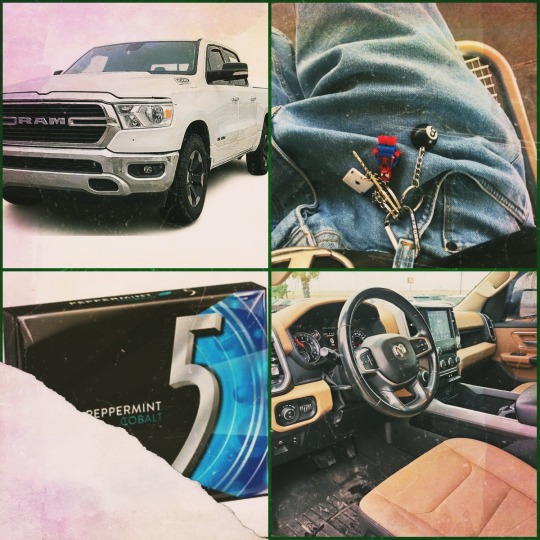
A muddy 2019 Ram 1500
Color: White
- Loves this truck
- Jfc clean this poor thing(on the outside)
- The picture looks clean but in reality, the truck is muddy and it's because he always forgets to take it through the car wash or goddesses forbid he takes the hose to it.
- On the inside, it's a little dirty on the floorboards, but nothing too bad. A little shake should do them some good.
- He keeps it pretty free of trash because he likes to make sure it looks nice despite his baffling logic for the exterior.
- He definitely has a carabiner keychain that he clips to his pants everywhere he goes.
- It's no longer a thought, he just clicks that hoe on the second he takes them keys out.
- He's that shift lead that you can identify right as he comes through the door. *keychain clicking together* Bro has a precussion anthem each time he decides to move
- Carries gum with him wherever he goes.
- Perfers 5 gum but will get whatever he can grab
- Definitely sits in his trucks on his breaks
- He'd rather people not have feet on his dash
- Can parallel park as easily as a chicken can fly
- His car smells like a mix of mint and lawn clippings.
|Sky|

2019 Subaru Crosstrek
Color: Maroon Red
- This is the family car that he got as a hand me down
- It's reliable
- Sometimes, it makes a funny sound, but Sky likes to ignore it
- The aux cord is always Sky's
- It's a little dirty
- Some candy wrappers here and there
- The back seat has some books in a box that will move between the back seat and the truck back and forth
- It smells like bird feathers and some mysteriously vague cologne
- He loves bird imagery so its literally all over his car with ornaments, stickers, etc.
- Will sometimes bring his bird in the car with him(It's an african grey named Chloe who likes to sing September. He also hadls a cockatiel named Issac)
- The car's seats are ripped in places by his birds picking at them
- There's a mark on the driver side dash from when Legend let Sky smoke for the first time and he ended up wiping some of the ash off on the dash and now its just there
- Legend thinks it's hilarious
- Sky finds it embarrassing
- "Do NOT put your feet up on the dash!"
- Has slept in his car on break and will do it again
- Very comfy
|Wars|

A very well cared for 2016 Dodge Challenger 2D
Color: Baby Blue
- The love of his life
- He found this car in a used car lot and HAD to get it
- Wasn't cheap
- Likes to remind the others that it wasn't cheap when they make fun of him for it.
- He is BIG on decorating his car
- Not as much as Legend is, but he likes his car to feel nice
- Smells DIVINE(Like a really high end cologne, but just enough to not be too much)
- Has a work backpack that stays in the car
- Likes funny little things like the cupholder coasters
- Please be nice to the car
- He does drive like a maniac if he's given the chance to.
- Has constantly asked Wild to race him.
- Doesn't hang out in it on breaks
- Keeps it clean and tidy
- I'm talking he wipes down the car twice a week on the interior and takes it through a car wash once a week, two if needed
- is really proud of his car
- There's some chips and a small dent in the back bumper, but its barely noticable
- he might cry if you call it ugly
- Rarely eats in his car
- The main reason why he likes it so much is because of how the exterior looks. Its satisfying.
|Wild|

Venom x22GT 250cc
Color: Midnight Black
- Motorcycle homie 🤙
- Someone always asks who's motorcycle it is
- He's proud of it
- He loves how fast it goes and how free he feels
- He gets pulled over pretty often, but is usually apologetic
- Gets scared around bigger vehicles
- Hates being beside 18 wheelers
- Parks it where he can see it from the back door
- Is paranoid about it being stolen
- doesn't race people
- Has a bit of an ego about it
- Loves finding stickers he can put on it
- the little keychains that fit on the little bits and don't get in the way? OH! Loves em
- Overall, pretty chill about it but will try to impress someone and likely fail if they show interest in him or wanting a ride on it
|Legend|

1985 Coachman Camper(Modified)
Color: Beige and Brown
- Van lifer
- He loves being on the road, freely going where he wants, and doing what he wants
- He will camp out in the back area of his work since it's mostly a dirt area no one is using
- Will walk around to nearby areas if its a nice day because he loves exploring
- Finding new things is a hobby
- He will hang out at Warriors or Time's place if he really needs people around him.
- Loves to decorate seasonally
- Hoarder
- No literally, dude hoards so much shit that he has to give it to Ravio to keep at his place cause he doesn't want to get rid of it but has no place in the van
- I originally thought he'd have a concrete place, but I felt like it would be better this way because it fits his vibe.
- I imagine he was really closed off and stayed in the van for a long time after he lost Marin, but Warriors really helped him out by letting him crash at his place
- He decided he was going to go to van life as a change of pace after losing Marin and Ravio happened to show up just as he was about to end his lease.
- He lost Marin early in the year that he bought the van, hoping for a van life because they talked about how fun it could. He crashed with Warriors later that year.
- Ravio stayed in the place and signed the lease and now Legend is living his best life
- Will only ever invite people in if he trusts them
- Spotify 24/7
- Somehow, everyone is surprised when they find out.
|Hyrule|

A dying 2010 Honda Accord LX-P
Color: Auburn Brown
- Has been in the family since 2010
- Ol' Reliable
- Shudders when he starts it up
- Loves it anyway
- Comfortable asf
- Him decorating it in fairy aesthetic just makes so much sense to me
- It fits and he loves it and he's not ashamed
- He makes a lot of friends off of his decorating choices
- Has a satchel that he carries that has everything anyone could need.
- Pain meds? Got em. Allergy meds? He's a walking pharmacy.
- Want some acid?
- Experimental
- Hippie coded
- Like Legend is on one end of the hippie spectrum and Hyrule is on the complete opposite side
- Bro will sleep in his car and come back as if he had a moment with Hylia
- Scares him to hell and back when it starts making funny sounds
- Will go to Four as soon as he knows something is wrong.
- It's his baby 🥹 He likes the vibes he has with the car
- "I'll give up on her when she gives up on me."
- Ride or die fr
|Four|

2016 Volkswagen Jetta
Color: Pure White(the site said it and I have doubts)
- A gift
- The mechanic of the group
- He's fixed his car multiple times so he usually fixes the others cars or tells them whats wrong and how to fix it/where to go to get the best price
- Helps Time with stuff he doesn't know.
- He doesn't really decorate it cause he can never decide HOW to
- He keeps it clean though and likes to go to those car wash vaccum places
- Is a safe driver
- Not 100% of the time
- Does not like being in his car more than he has to.
- He'll eat in his car if he's really hungry
- Overall, not too crazy about his car to really do much to it.
- Is usually a good person to call if you need a last minute pick up
- The Sane One™
- Aux cord is an option
- He's a radio kind of guy
- Will hang out with Legend in his van if he just wants to destress
- HATES driving in the snow
- HATES other drivers
That's pretty much it :3
I TOTALLY didn't forget to put the name on each one like I did with Time's :D
BAAAAHHHHYYYYEEEEE!♡
#lu#linked universe time#linked universe wild#linked universe au#link#linked universe wind#linked universe#linked universe twilight#linked universe legend#linked universe sky#linked universe four#linked universe hyrule#linked universe warriors#linked universe headcanons
20 notes
·
View notes
Text
Guys guys guys its AU time! With older Miles(18) and older Hobie (20). (Also no spider man powers, normal times)
Miles is attending a prestigious University in Northern New York after years of studying and applying for scholarships at Visions. Rio and Jefferson are super proud of him although a bit sadden that their baby boy is now a young man leaving the house.
On the plus side, Miles is SUPER stoke to finally FINALLY have his very own dorm ALL TO HIMSELF! no more cramped spaces, uncomfortable bunk beds or missing shoes (that somehow always made an appearance again when Ganke returned to the room) Miles admits he will miss Ganke but they'll definitely catch up over some games on the PS4 and summer breaks.
But the best part about this university in Mile's opinion is the fact they allow pets on campus and in dorms. Which means he can live his dream of owning a dog. He's always wanted a dog since he was a kid but his parents never thought he was responsible enough to take care of it ( but mainly because Rio and Jefferson didn't want to deal with a toddler and training a puppy at the same time) Now that Miles is grown he's decided its time to make his own decisions. And that decision was to get a dog the moment he moves into his dorm. It took him 2 weeks to get settled in with his belongings and getting familiar with his classes around campus but after that he was heading towards the nearest pet shelter he could find.
And here we enter Hobie Brown! He works at the local pet shelter which houses all sorts of abandoned and neglected pets. From your typical cats and dogs to reptiles, birds, and even fishes, Hobie is there to take care of them all! And on the weekends he playing with his band mates.
Anyway Cue Miles entering the pet shelter and he's immediately greeted with the site of Hobie. They make brief eye contact and Miles freezes in place lost in thought *Damn, I was not expecting to see someone so fucking cool and hot today oh my gosh get it together you're here for a dog you're here for a dog you're here for a-*
"You know usually people tend to rush straight to the pups and ignore me but with the way your staring at me right now I can't say I'm complaining. your face is the same shade as the pups little red rockets back there" Hobie snickers
"Bro WHAT!?" Miles yelled in utter shock. He was NOT prepared for any amount of what was said to him in that moment. "What- I mean- like man- that was the wildest response I've ever-" He stops rambling to gain his composure back. "Look man, I came in here hoping to adopt a dog, can you help me or what?"
Hobie looks at Miles with amusement in his eyes "Sure thing love, straight to the back we go!"
And that was Hobies and Miles first interaction at the pet shelter.
Back to the p o i n t!!!
This is basically a college Miles and pet shop worker Hobie (except its a shelter) AU merged into one. Basically Miles visits the shelter every week looking for a dog to adopt and Hobie shows him around. With each visit Miles begins to learn more about Hobie and his relationship with the animals at the shelter. Like how Hobie absolutely adores this grey African parrot that was left in the cage on the street. Its feathers are sparse and sheds but it loves to mimic Hobies Cockney accent.
Eventually Miles adopts a cute senior black Labrador named Orca due to the white and gray furs around her eyes. Even after getting his dog he still visits the shelter between classes to talk to Hobie.
So like yeah in order to keep this short before I literally write the first fucking chapter of this AU on here.
Miles is in college and develops feelings for Hobie while he helps him adopt a dog. They hang out sometime later and Eventually BOOM they're boyfriends :D
#punkflower#miles x hobie#i NEED to see more domestic stuff with these two#WHERE ARE THE COFFE SHOP AUs?!#THE TATTO AND PIERCINGS PALOR MEETS FLOURIST AU'S?!#come on yall i belivs in us
208 notes
·
View notes
Text
feathers aren't enough. i will care about the next jurassic park only when the dinosaurs are voiced by african greys
9 notes
·
View notes
Text

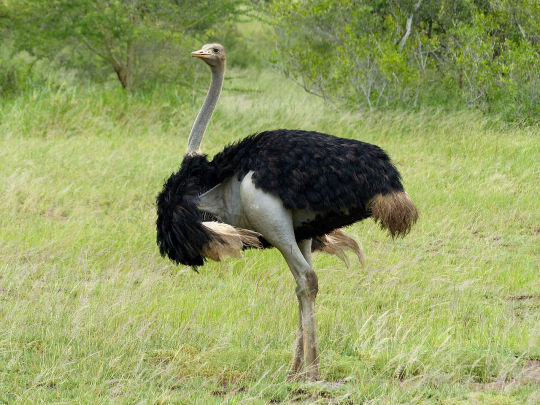
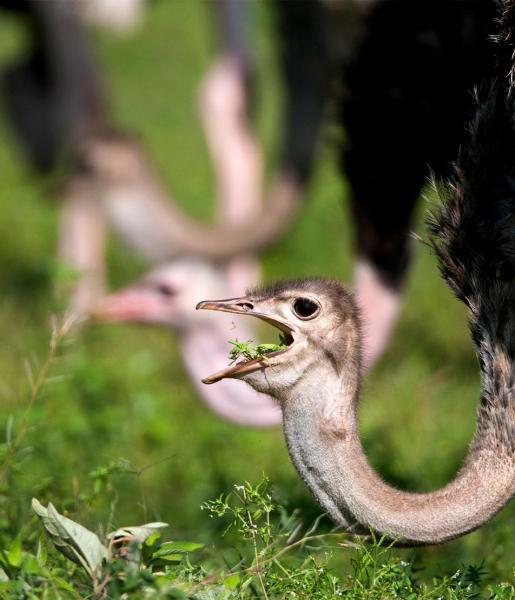
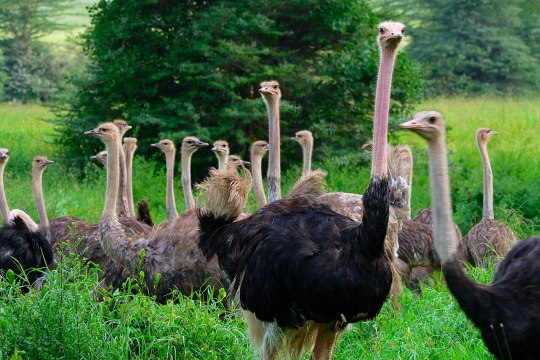
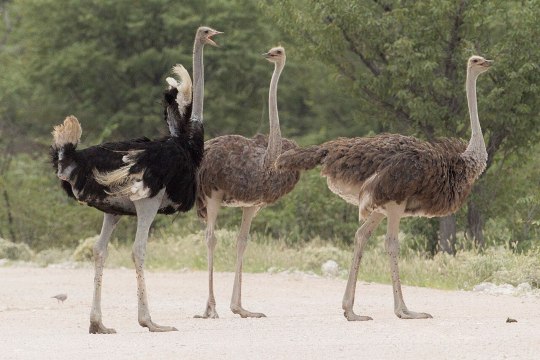
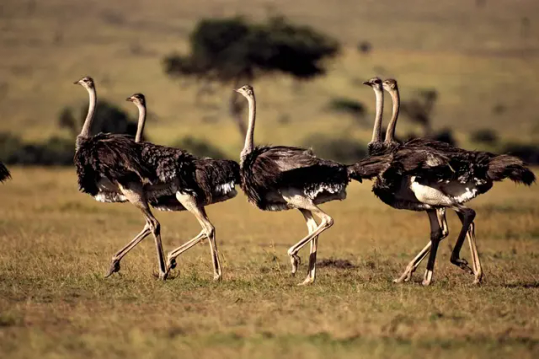
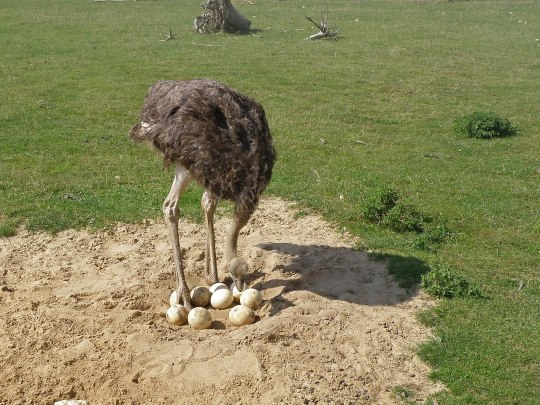
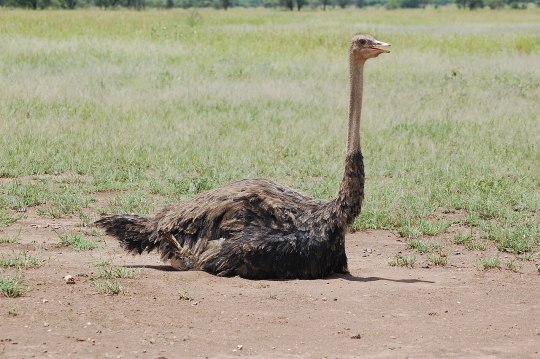
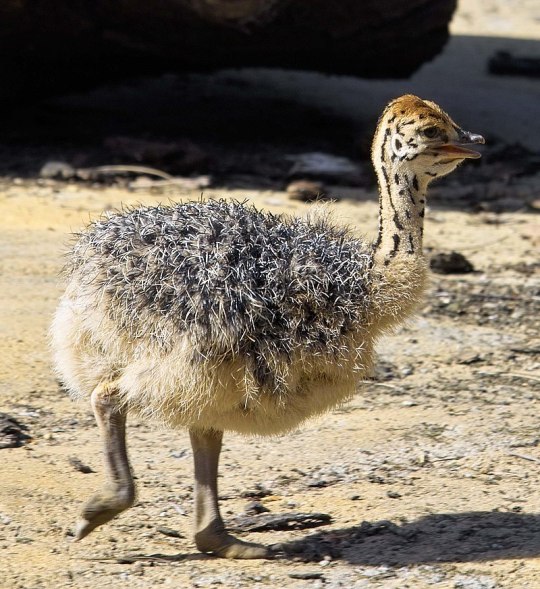
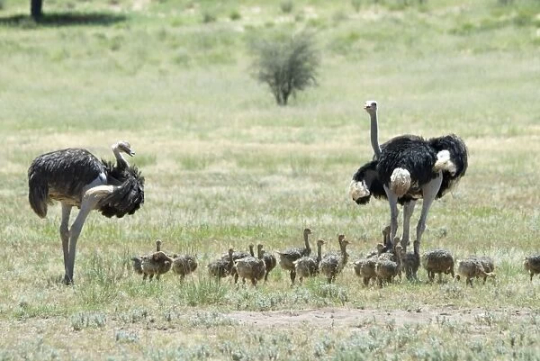
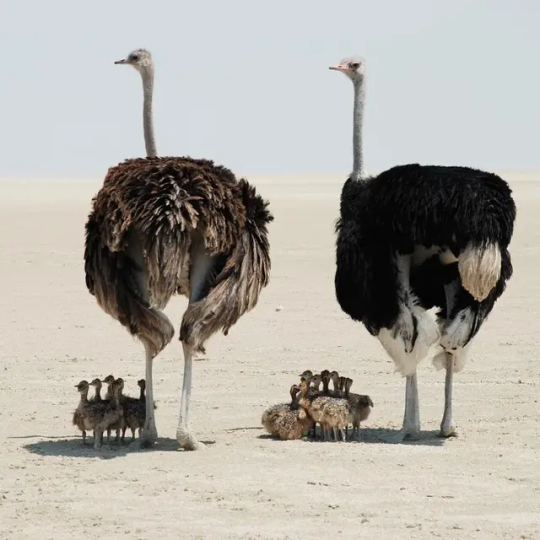
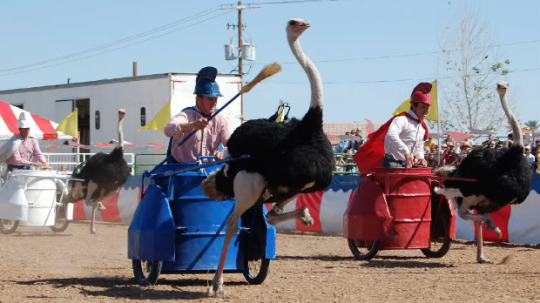
Struthio camelus, also known as the common ostrich, is a species of flightless ratite which was once native to India, the Mediterranean, and the middle east, but can now be found throughout much of Africa, with introduced populations occurring in Australia. They inhabit grasslands, scrublands, dry forests, and deserts where they feed upon various seeds, nuts, fruit, flowers, shrubs, and grasses as well as insects, small reptiles, and carrion. Common Ostriches are themselves eaten by cheetahs, lions, leopards, African hunting dogs, and hyenas. Common ostriches have many antipredator adaptations, such as great eyesight, and long muscular legs which allow them to deliver powerful kicks and run at up to 50mph (80km/h), making them the fastest animal on two legs. They also live in nomadic fission fusion flocks of up to 100 birds, which often travel alongside herbivores like wildebeest, zebra, and antelope. With females reaching around 5.9 to 6.3ft (1.75 to 1.9m) tall and 130 to 260lbs (59 to 120kgs) in weight and males reaching 7 to 9ft (2.1 to 2.75m) tall and 180 to 345lbs (82 to 156kgs) in weight, the common ostrich is the largest of all extant avians. Males have black body feathers and white feathers on their wing-tips and tails, while females have grey-brown body feathers. There necks are long, eyes and large, and feet are broad only sporting 2 toes. The mating season lasts from March to September. During such time males establish a territory, then females break into groups of 2 to 7 lead by a top hen who evaluate and select a specific male to mate with the entire breeding season. After the initial mating the male will dig a nest; a shallow dip in the ground in which the top hen will lay 7-10 eggs. Subsequently, the male will mate with all females in the group. These females will each lay their eggs around the top hen's, once around 20 to 60 eggs have been laid the top hen will incubate them during the day, while the male will incubate them at night. After 35 to 45 days, the eggs will hatch and the male will take care of the chicks until they are about 10 months old and capable to fend for themselves. Under ideal conditions a common ostrich will reach sexual maturity at 2.5 to 4.5 years old and may live up to 70.
#pleistocene pride#pliestocene pride#common ostrich#ostrich#ratite#bird#ostrich riding#ostrich racing#chariot racing#wildlife#animal facts#birds
6 notes
·
View notes
Text

I was browsing my bookmarks, and found a good one that I didn't remember... and that turned out to be gone. I ran it through the Wayback Machine, and turns out the site has been down for a few years.
So, for my own sake and for posterity, I am posting it here, because it is useful information.
How to Go Cage Free
Tara Hurlin
I have been researching the care of companion parrots ever since they captured my interest at age 18. Now at age 30, I run a small rescue out of my home that specializes in special needs birds, including parrots with behavioral issues and some with what would consider depression. I take pride and enjoyment out of offering a variety of fresh healthy foods daily, rotating toys a couple times a week, and spending one-on-one time with each of them. Lets put it this way: I never shower alone!
But even after doing all of that, I still felt that I needed to do more. They seemed happy, but something was still off. I visited the Foster Parrots, Ltd. sanctuary in 2013. At first, I thought it was going to be a sad experience; there are around 500 parrots in their care. But when I arrived to see all of the huge free-flight setups, I discovered how happy those birds actually were. It was then that it hit me: I need to find a way to eliminate as many cages as I can.
Even if they are born in captivity, parrots are wild at heart. They are not domesticated animals; their brains are not wired for life in a cage. Depending on the bird, some think of their cage as a safe place to go to sleep and eat, but others act out, get depressed or start feather picking from boredom. The huge, most important part to consider when thinking about going cage free is (pay attention): You must know your bird, and if you have a flock, you absolutely must know your flock.
It took about a year for my rescue, Hurlin’s Parrot Rescue, to convert to going mostly cage free, and we are still changing things weekly. Keep in mind that we have a flock of 20, and it is a slow process because I allowed everyone to adjust at their own pace. In the beginning, I built jungle gyms hanging from the ceiling out of untreated manila rope. I hung a variety of toys, and they used that as a supervised playtime area – supervised so I could learn who may get along with who, or who was going to be a issue with other birds. As an important note: The large birds such as the Macaws are always kept in separate rooms, the Cockatoos in another separate room, and then the Amazons and African Greys in another.
The next step was to add large hanging perches made out of bird safe woods such as poplar, maple, untreated but de-barked pine, and Manzanita wood. It is important to hang all items with either stainless steel chain or plastic chain, depending on your birds (many will chew plastic chain). I installed dishes directly to the stands and hung toys from the chain so they could reach them. Who got to try out their cage free setup first was based upon each individual’s behavior during the supervised playtime trials. For example, I started with the more shy birds that would need more time to establish their territory, let them get situated, then moved on to the Timneh African Greys who had already established their flock. All the while, I routinely weighed each bird to make sure they were maintaining their weight and not losing due to any stress that may be associated with the big changes. My flock personally had no weight concerns during the transition, but better safe than sorry.
[missing image] When choosing your chain, also make sure that it is safe for little birdie feet. There are certain types known to trap toes.
Meanwhile in the Macaw room, I hung all five of their ceiling play stands in the same day and moved the cages out. Shower curtains were also hung on the walls to assist in their giant poops and food flinging. I did this transition more suddenly because everyone was already used to each other; most had been in the same room for over a year. There is one handicapped Green wing Macaw in this flock, Paco, whose feet were so badly injured that they are paralyzed. Even she is cage-free: I made a play stand that works for her from hula-hoops wrapped in fleece fabric. This works wonderfully, since she is unable to climb or perch, she would just sit in the bottom of a cage all day and crawl through any poop. I had to wash her blankets and bathe her daily. Now she just aims her butt off of the play stand and poops on the papers like everyone else, usually with a little happy dance afterwards!
[missing image] Even handicapped birds have the potential to live cage free, like Paco the Green Wing Macaw.
During the transition, only a few problems occurred: My Scarlet Macaw, Booboo, who is normally a high-anxiety bundle of nerves and plucks herself accordingly, did pluck her feathers during the first week of the change. Aside from being more nervous than usual, she otherwise seemed happier than normal and in bright spirits, and even began to play with toys – something I never saw her do before. She has now fully adjusted and stopped plucking (until another hormone season comes around, most likely).
There are four birds who unfortunately can never be cage-free, but I found this out in the very beginning during supervised play times. One is our male Eclectus, who puts a lot of effort into chasing down the Amazons, and in turn his friend Velvet also cannot be cage free, because she will find a dark corner and get “nesty”, which is something that we avoid here. The Eclectus species also has different dietary needs. Another caged bird is Toby, our “hot” yellow-nape Amazon, but that was common sense and expected, as he is highly hormonal to the point of unpredictable attacks. And the fourth is Buddy the Red Lory for obvious reasons: he’s a completely different species with different dietary needs, and he is a little guy that could easily get hurt.
About three-to-four months after switching to cage free, there is one bird in particular, Spooky the Timneh African Grey, who began to claim to entire room as his territory and bully the other birds, so as a precaution he maintains a cage while we are not home, but the door is opened at all times when we are home. His setup may or may not go back to cage free again in the future. This is a great example of how flock dynamic can change over time, and you as the caretaker have to be prepared to make any changes that come with it. For me, that was regretfully adding one more cage to the bird room, making five cages total – not bad at all if you consider the flock of 20.
I often get the question of “what if a bird gets adopted, or needs to join the flock?” Similar steps will be taken if another bird is relinquished to our rescue and has the possibility of going cage free. Of course, we maintain our quarantine procedures; our quarantine room is an entirely separate room from any of the other bird rooms. Then, once we are positive the new bird is healthy, he or she is brought into the bird room in a cage to gage reactions from the flock and the newbie. From there, the new bird can move to an open-cage status, then possibly cage free. It is important to note that the majority of birds that are easily adoptable into approved homes will not transition to our cage-free flock. This will avoid stress on them if they find a new family, and it will prevent stress on our own flock. With every bird that comes and goes, the flock is affected and the dynamic changes. We take the time to get to know each bird before making any decisions – as much time as it takes. It is our responsibility to do what is in the individual’s best interest, and for our existing flock.
As for maintaining the cage free setup, new toys, swings, boings and other perches are hung and changed out regularly to keep everyone busy. Most of the birds are flighted and will explore the room, but they always return to their “safe spot” on their own play stands for food, water or sleep (with the exception of a few that prefer sleeping up on the ropes).
[missing image] It's important to keep your flock busy by adding random foraging areas and rotating toys.
I wish that I could tell everyone that eliminating cages was all sunshine and rainbows – a piece of cake – but it takes a lot of thought and even more work! It may not be for every flock, and I can’t make that decision for you because only you can truly know your birds. Only you know what your setup is capable of and what is realistic for you.
What I can say is that I have no regrets. I have never seen my birds happier. The sparkle in their eyes shines brighter; they chatter more and interact with each other more, even just vocally from across the room. The vibe in the room is much more lively and happy, and I no longer feel the guilt of seeing so many cages lined up around the walls like little jail cells. A few birds in particular have completely turned around: for example, Ariel, a bird who was locked in a cage for ten years and very difficult to handle due to her mood swings (I self-diagnosed her as being bipolar with possible depression), now constantly asks for me to hold her and accepts preening, almost to the point of cuddling. The first time she did this is a moment I will never forget; it was the kind of moment that reminds a rescuer why they rescue in the first place. Tears of joy filled my eyes. Another change happened in my African Greys, Shelby and Remy. With the cage-free setup they go wherever they please, and that often involves following me wherever I am in the house, which is something I love. They fly back down to their rooms when they decide it is bedtime. Their confidence has become higher from having that independence.
[missing image] Ariel is a more emotionally stable bird after going cage free.
Another perk for me personally, aside from the happy aura radiating throughout my bird rooms, is that this setup is very low maintenance compared to having cages. I spend less time scrubbing cages bars and bottom grates, which means I can enjoy more time interacting with the flock. What used to take a full day to clean now only takes a couple of hours – and that is a full on OCD bird room scrub down. We have leftover rolls of 48” wide paper donated by our local newspaper distributor. The paper is cut into large sections to completely cover the floors in each room. Smaller sections are laid over the main paper for the extra poopy spots for ease of changing it, and it makes the larger portion last longer. I sweep daily, and I wipe the walls and change papers in their entirety a couple times per week.
[missing image] Be prepared to sacrifice your wood trim... And doors!
I still continue to make changes to the bird rooms, and this will be an ongoing thing. Another large phase that will take place in spring/early summer 2016 is switching out all of the wood trim for tile or stainless – whichever I find the most cost effective (or the least ugly). Lucky for the flock, I didn’t care for the wood trim we had in those rooms, anyway!
[missing image] A glimpse of the mostly cage-free setup. Buddy the Red Lory's cage is to the left, and to the right (not pictured) are the other two cages for Velvet and Shifu, and Toby.
[missing image] Another shot of the same bird room showing the other two cages. An air filter and backup heat (vented to the outside) is also in the photo.
Main Points for going cage free:
Know your birds.
Be patient and observant.
Weigh your birds regularly to make sure they are maintaining weight and health.
Be prepared to make changes as flock dynamics change.
Adjust with the flock; you are part of it.
You better not care about your trim or possible furniture in the room, or have plans to change to un-munchable trim, like tile.
Keep them busy by changing out perches, toys and foraging activities. It’s like having a caged setup, but on a larger scale with no bars, so you have to get creative.
Enjoy watching your flock be a flock, and take pride in being part of it.
4 notes
·
View notes
Note
Would you rather have a bird who could repeat words or one who could chirp a beautiful song?
As much as I love birdsong, my love of communicating with and understanding birds is greater. So, given the choice between a canary and an African Grey (assuming all care that needs to be taken is reasonably possible even when I'm struggling the most), I would pick the Grey in a heartbeat.
Birds chirping is nice and wonderful, but my near-obsession with birds is about a few things in particular:
Their brains, and how they think and feel with an organ built so much differently than ours, is the biggest draw. The intelligence that you see, despite the silly nature of them, the fact that the lights are on and someone is home, and the joy of meeting whoever that is - that's unparalleled.
There's also the fact that I find a lot of solidarity with them (as part of their intelligence) - the wariness and flightiness that can protect an incredibly loving and gentle heart, the way they're often seen as a novelty instead of a living thing with boundaries worth respecting, the way that I imagine they must feel attempting to communicate with beings that, all too often, make no effort to understand their body language, and the poor bird ends up doing all the work. I'm autistic, need I say any more?
Aside from that, though, I've always loved watching them fly. Their flight and their feathers catch my mind's eye like little else does. Feathers are so incredibly stimmy, and I imagine flying would allow for all sorts of creative stims, too.
All that aside? Talking bird, anytime. And I do genuinely believe that they understand, on some not-insignificant level, that and what they are communicating when they use words.
2 notes
·
View notes
Text
Feathered Friends: The Top Bird Species to Consider as Pets
Introduction: Birds make wonderful pets, bringing color, song, and companionship into our lives. However, not all bird species are suitable for everyone. In this comprehensive guide, we will explore some of the top bird species to consider as pets, their unique characteristics, and how to care for them properly. African Grey Parrot The African Grey Parrot is known for its exceptional…
#adopting a pet from a shelter#best pet food brands#best pet insurance options#Best pets for apartments#common cat behaviors explained#dog training tips for beginners#exotic pets for beginners#how to care for a puppy#how to groom your dog at home#how to train your cat#pet-friendly vacation destinations#signs your pet is unwell#tips for introducing a new pet to your home.#top bird species as pets#understanding pet body language
0 notes
Text
Something There
Read on AO3!
A/N: Last week I went to the Melany Bird Park in Queensland, and I couldn't stop thinking about Mad and Mare going to the same place.
--
“Where did you say we were going?” Mad asked, adjusting his position in the passenger seat as Mare hummed along to the song on the radio. “And why did you tell me to be careful of what I wear?”
“We’re almost there, dear heart,” Mare replied, turning down a street and leaning over the wheel to read the signs. “I feel like you’ll enjoy this. It’s educational and enjoyable. And I’ll be with you the whole time.”
Mad just hummed in response, fiddling with the green and purple Tangle Mare had bought him. He looked up when he felt the car stop, furrowing his brow when he read the sign at the place they’d ended up: BOTANICAL GARDENS AND BIRD PARK.
“Botanical gardens?”
“To start,” Mare answered, leaning over to give Mad a peck on the cheek before getting out of the car, moving around to open Mad’s door. “The main attraction is the bird park. We missed the recent tour, so we’ll get tickets for the next one, have lunch, and walk around the gardens before going in to see the birds.”
Mad followed Mare to buy tickets, holding his hand tightly as he was led out of the office and down a path toward some gardens. Mare happily listened to Mad telling him about the flowers and trees they passed, pausing at a tree with flowers around the trunk.
“What about this one?” He asked, pointing to the flowers with a tilt of his head. “The flowers have… roots all around the tree. Is that normal?”
“It looks like an orchid,” Mad began, looking at the flowers with a frown. “Some varieties grow in trees, others in the ground, but I’m not sure about this. I’ll need to read more about orchids, and it’s difficult to find information because there’s so many different types, but I can definitely go look—” He was cut off by Mare grabbing his chin and pulling him into a kiss, eyes glazed when he pulled away.
“You’re so cute when you’re willing to research things for me,” Mare breathed, chuckling when Mad blushed. “Come on, starshine. It’s almost time for the birds.” Taking Mad’s hand, Mare led them back through the gardens to the aviaries, joining a line for the tour group.
“Mare,” Mad whispered, shifting to hug Mare’s arm to his side. “D-Do you think the birds are violent?” He looked up when Mare chuckled, a low rumble in his chest before lifting his free hand to pat Mad’s head.
“These birds are rescues, darling,” Mare began, brushing Mad’s hair out of his eyes. “They’ll be gentle with you. And if you don’t want them to land on you, that board over there says you can hold a feather duster to ward them off.”
“Oh,” Mad breathed, glancing at his shoes before looking back at Mare. “That sounds… okay.”
--
Mare noticed that Mad’s tense grip on his arm had gotten looser the moment they stepped into the area, eyes bright as he catalogued every bird he spotted. With a soft smile, Mare walked with Mad to the next door, holding his hand to Mad’s cheek when a bird landed on his finger.
“That one’s a parrot,” Mad stated, reaching out a hesitant finger to the bird’s chest, jumping back when the bird flew away. “I liked the blue on its wings.” He froze with a gasp before meeting Mare’s eyes, slowly straightening up when he realised the weight on his head was a bird. “Which one’s on my head?” He whispered.
“Think you told me it was called an ‘African Grey’,” Mare replied, pulling out his phone to take a photo before gently waving the bird away and showing Mad the photo. “The red tail feather and dusty grey colour? She seemed to enjoy sitting on your head.”
“Yes, you’re right,” Mad giggled, leaning against Mare as he looked at the phone. “I wonder if any more birds will land on me today. That wasn’t painful, just a little shocking when she landed.”
Mare followed Mad through the areas, taking pictures whenever birds landed on his head. When they reached the last area, Mad no longer needed to hold Mare’s hand, happily walking ahead of him and pointing out the birds he recognised.
Mare froze when he couldn’t see Mad, turning in his spot to catch a glimpse of Mad’s freckled face. His heart started to pound with worry before pausing, catching the lilting giggle of Mad’s joy from behind him. Pushing through crowds, he found his boyfriend standing beside a tree, covered with birds.
“Mare! Look at all of them!” Mad called when he spotted Mare, eyes shining and face split into a smile. On his head proudly sat a macaw, cleaning its feathers and squawking at birds that got to close, and on each arm sat four small parrots, singing happily as Mad giggled.
“I feel like I’m in Beauty and the Beast,” Mare hummed, snapping a few photos of Mad before pocketing his phone and waving the macaw off his head. “Though I’m pretty sure I’d be the beast, what with you loving your books so much.”
“I could never love my books more than you,” Mad protested, gently shaking the parrots off him to follow Mare out of the aviary. “Books can’t keep me as warm as you can, and there’s only so much you can learn from books before you need a real person to teach you.”
“What are you getting at, starlight?” Mare teased, nudging Mad when the scientist blushed. “What things have I taught you that you couldn’t learn from books?”
“I-I’ll tell you at home,” Mad mumbled, taking Mare’s hand and practically dragging him back to the car, grabbing his shirt to pull him into a kiss before climbing into the passenger seat.
------------------
@iamvegorott @brokentimewatch @rattyboyisemo
#writing#fanfiction#nwtb fanfiction#madmare#fluff#thank you Veg for encouraging me to write this#sorry it took a week to be finished
1 note
·
View note
Text
African Grey Parrots and the Science of Sleep: Wild vs. Captivity – Tips for a Well-Rested Bird
Discover how African Grey Parrots sleep in the wild vs. captivity and learn tips to ensure your feathered friend gets the best rest possible!
#african grey parrot#african grey lifespan#tiktokparrot#african grey behavior#buying an african grey parrot#cute birds#african grey parrot lifespan in captivity#african grey parrot care#africangrey#african grey#African Grey in captivity#african grey in the wild#african grey parrot website#African Grey Parrots#African Grey sleep behavior#African Grey sleep benefits#African Grey sleep cage#African Grey sleep cover#African Grey sleep cycle#African Grey sleep deprivation#African Grey sleep disturbances#African Grey sleep environment#African Grey sleep facts#African Grey sleep feather plucking#African Grey sleep flock#African Grey sleep fun facts#African Grey sleep grumpiness#african grey sleep habits#African Grey sleep health#African Grey sleep humidity
0 notes
Text
Everything You Need to Know About the Dusky Conure (Dusky-Headed Conure)
Introduction
Dusky conures, also known as dusky-headed conures (Aratinga Weddellii), are beautiful and fascinating parrot species popular among bird enthusiasts and pet owners. These small-to-medium-sized birds are native to the tropical rainforests of South America, specifically found in regions of Brazil, Colombia, Ecuador, and Peru. Known for their playful personalities and striking appearance, they make excellent pets for bird lovers. In this article, we will delve into everything there is to know about the dusky conure, including its natural habitat, physical characteristics, care requirements, and more.
Natural Habitat and Distribution of Dusky Conures
The dusky conure or dusky-headed conure thrives in the humid lowland rainforests of the Amazon Basin. These birds are typically found at elevations of up to 1,400 meters (4,593 feet) above sea level, residing in both primary and secondary forests. In the wild, they prefer the canopy layer of the forest, where they can forage for fruits, seeds, and vegetation while remaining relatively safe from predators.
Dusky conures live in large flocks, sometimes consisting of 30 or more individuals, allowing them to socialize and stay protected. The group dynamics help them navigate through their habitat as they travel in search of food and shelter. Flocks of dusky-headed conures are a common sight in the treetops of South American forests.
Physical Characteristics of the Dusky Conure
The dusky conure is a visually appealing bird with distinct characteristics that set it apart from other conure species. Adult dusky-headed conures measure around 11 to 12 inches in length, including their tail, and weigh between 90 and 120 grams. Their average lifespan ranges from 20 to 30 years with proper care, although some individuals may live longer in captivity.
The plumage of the dusky conure is primarily green, with subtle variations in shading across its body. Its name comes from its unique head coloration, which is a soft grayish-brown or dusky hue. The head contrasts with the vibrant green feathers on the wings and body, making the bird easily recognizable. They also have splashes of blue feathers on the flight feathers, tail, and wings, further enhancing their striking appearance.
Another feature of the dusky-headed conure is its bare, pale skin around the eyes, often referred to as the “eye ring,” which is surrounded by bright, expressive eyes. Their beaks are dark and slightly curved, ideal for cracking seeds and nuts.
Dusky Conure Behavior and Personality
Dusky conures are known for their friendly and outgoing personalities. They are social birds that thrive on interaction, making them ideal pets for individuals or families who are willing to devote time and attention to their care. These birds are playful, energetic, and curious, often exploring their surroundings and engaging with toys and activities in their environment.
Due to their highly social nature, dusky-headed conures bond strongly with their owners. In captivity, they require regular interaction and mental stimulation to remain happy and healthy. They are known to be affectionate birds that enjoy sitting on their owners' shoulders or being involved in daily activities. Their friendly disposition makes them easy to train, and they can learn a variety of tricks and behaviors through positive reinforcement methods.
While dusky conures are not as vocal as some other parrot species, they are still capable of producing a range of sounds. Their calls tend to be loud and high-pitched, which is typical of many conures, but they are less prone to constant screaming or excessive noise. Some dusky-headed conures may learn to mimic words or sounds, though they are not known for being expert talkers compared to other parrots like African greys or cockatiels.
Housing and Cage Requirements for Dusky Conures
One of the most important aspects of dusky conure care is providing them with a suitable living environment. As active birds, dusky conures require a spacious cage that allows them to move around freely and exercise. The minimum cage size recommended for a dusky-headed conure is 24 inches wide, 24 inches deep, and 30 inches high, with bar spacing of no more than ¾ of an inch to prevent escape or injury.
Within the cage, it is essential to provide plenty of perches, toys, and activities to keep the bird entertained and mentally stimulated. Conures enjoy chewing, climbing, and exploring, so a variety of bird-safe toys, swings, ladders, and foraging materials should be available. Rotate toys regularly to prevent boredom.
Dusky conures also need time outside of their cage to exercise and socialize. It is recommended to allow them at least a few hours of supervised out-of-cage time each day to fly, stretch their wings, and interact with their owners. A safe, bird-proofed area should be provided for this purpose, as these curious birds may explore electrical cords, furniture, or other potentially hazardous objects.
Diet and Nutrition for Dusky Conures
A balanced and nutritious diet is crucial to keeping dusky conures healthy. In the wild, these birds feed on a variety of fruits, seeds, nuts, and vegetation. In captivity, it is essential to replicate this diverse diet to ensure proper nutrition.
A high-quality commercial pellet should form the foundation of a dusky conure's diet. Pellets are specially formulated to provide essential vitamins and minerals, reducing the risk of nutritional deficiencies. However, pellets alone are not enough, and they should be supplemented with fresh fruits, vegetables, and seeds.
Dusky-headed conures enjoy a wide variety of fresh produce, including leafy greens (like kale, spinach, and lettuce), carrots, peppers, apples, berries, and citrus fruits. It is important to wash fruits and vegetables thoroughly and remove any seeds or pits that may be harmful to birds. Additionally, nuts such as almonds, walnuts, and cashews can be offered as occasional treats.
Seed mixes can also be part of their diet but should be given in moderation, as conures may selectively eat seeds and neglect other foods, leading to imbalances. Fresh water should always be available, and food and water dishes should be cleaned daily to prevent contamination.
Health and Common Issues in Dusky Conures
Like all pets, dusky conures are susceptible to certain health issues. By providing a clean environment, a proper diet, and regular veterinary care, many of these problems can be avoided. However, it is important to be aware of some common health concerns that can affect dusky-headed conures.
Feather Plucking: One of the most prevalent issues among conures is feather plucking, where the bird starts pulling out its feathers. This can be caused by various factors, including stress, boredom, malnutrition, or medical conditions. Ensuring mental stimulation, providing a healthy diet, and creating a stress-free environment can help prevent feather plucking.
Respiratory Infections: Dusky conures are prone to respiratory infections, which can be caused by poor air quality, drafts, or exposure to cold temperatures. Signs of respiratory illness include wheezing, sneezing, discharge from the nostrils, or difficulty breathing. If these symptoms appear, a visit to an avian vet is necessary.
Psittacosis: This bacterial infection, also known as parrot fever, can affect conures and other parrot species. It is caused by the bacterium Chlamydia psittaci and can lead to respiratory distress, lethargy, and diarrhea. Psittacosis is contagious to humans, so early diagnosis and treatment are crucial.
Regular vet check-ups are important to detect any health issues early. It is also vital to monitor your dusky conure for any changes in behavior, appetite, or physical appearance, as these can indicate underlying health problems.
Breeding and Reproduction of Dusky Conures
Breeding dusky-headed conures in captivity can be challenging but rewarding for experienced bird breeders. These birds reach sexual maturity around two to three years of age, and successful breeding requires the right conditions, including proper housing, diet, and care.
A nesting box should be provided in the breeding cage, as conures prefer enclosed spaces to lay their eggs. The female typically lays between three and five eggs, which she will incubate for about 23 to 26 days. During this time, the male may assist by feeding the female and guarding the nest.
Once the chicks hatch, they will be dependent on their parents for food and warmth for several weeks. It is crucial to ensure that the breeding pair is well-nourished during this period, as the health of the chicks depends on the parents' condition. Hand-rearing the chicks may be necessary in some cases, especially if the parents are inexperienced or unable to care for them properly.
Dusky Conures as Pets: Pros and Cons
Like all pets, dusky conures come with their own set of advantages and challenges. Before bringing one into your home, it's essential to consider whether they are the right fit for your lifestyle and expectations.
Pros:
Affectionate and Social: Dusky conures are known for their friendly, affectionate nature, making them great companions for those willing to spend time with them.
Moderate Noise Levels: While they can be vocal, dusky-headed conures are generally quieter than other conure species, which is a plus for apartment dwellers or people sensitive to noise.
Playful and Energetic: These birds are highly active and playful, providing hours of entertainment with their antics and curiosity.
Cons:
Attention Requirements: Dusky conures need daily interaction and mental stimulation, which can be demanding for owners with busy schedules.
Potential for Biting: Like many parrots, conures may resort to biting if they feel threatened or neglected. Proper training and socialization are essential to prevent this behavior.
Long Lifespan: Dusky-headed conures can live for several decades, so owning one is a long-term commitment that requires ongoing care and attention.
Conclusion
Dusky conures or dusky-headed conures are delightful and engaging birds that can make wonderful pets for the right owner. Their friendly nature, moderate noise levels, and playful personalities make them a favorite among bird enthusiasts. However, they require a significant amount of time, attention, and care to thrive. By understanding their needs and providing a proper environment, nutrition, and mental stimulation, you can enjoy many years of companionship with these charming birds.

0 notes
Text
Yellow Sided Green Cheek Conure

All About the Yellow-Sided Green Cheek Conure: A Colorful and Loving Companion Introduction The Yellow-Sided Green Cheek Conure, also known simply as the Yellow-Sided Conure, is a stunning parrot species renowned for its vibrant plumage and affectionate personality. As a member of the conure family, these small to medium-sized parrots have become increasingly popular among bird enthusiasts and pet owners. They are adored for their playful nature, intelligence, and the strong bond they often form with their human companions. This article will delve into the captivating world of the Yellow-Sided Green Cheek Conure, exploring its characteristics, care requirements, and why it makes a delightful pet. Body
Characteristics and Appearance The Yellow-Sided Green Cheek Conure is a subspecies of the Green Cheek Conure (Pyrrhura molinae), native to the forests of South America, particularly in Brazil, Bolivia, Paraguay, and Argentina. These birds are relatively small, measuring about 10 inches in length, including their tail, and weighing between 60 to 80 grams. What sets the Yellow-Sided variety apart is its distinctive plumage. Unlike the standard Green Cheek Conure, which has a mostly green body with a grey head, the Yellow-Sided Conure features a bright yellow hue on its chest, which can range from a light lemon shade to a deeper golden yellow. This vibrant color contrasts beautifully with the red patches on their belly and the rich green feathers covering most of their body. Their cheeks are a pale yellow or whitish color, and they have a dark grey beak with a playful expression in their dark, intelligent eyes. This combination of colors makes them one of the most visually striking members of the conure family.
Personality and Temperament Yellow-Sided Green Cheek Conures are known for their affectionate and playful demeanor. They are social creatures that thrive on interaction and enjoy spending time with their human caregivers. These birds are curious and energetic, often engaging in playful antics like hanging upside down from their perches or playing with toys. Their inquisitive nature means they love exploring their environment and can be quite mischievous if left unattended for too long. Unlike some other parrot species, Green Cheek Conures, including the Yellow-Sided variety, are relatively quiet. While they do have the ability to mimic sounds and words, they are not as loud or vocal as larger parrot species, such as African Greys or Cockatoos. This makes them a great choice for apartment dwellers or those who prefer a quieter pet. These birds are also highly intelligent, which makes them quick learners. They can be taught a variety of tricks, from simple commands like “step up” to more complex behaviors such as fetching objects or dancing. They have a reputation for forming deep bonds with their owners, often displaying affection through cuddling, head bobbing, and gentle nibbling. However, they can become possessive or territorial if not properly socialized, so early and consistent training is important.
Care Requirements Owning a Yellow-Sided Green Cheek Conure is a commitment that requires time, effort, and dedication. These birds can live up to 25 to 30 years in captivity with proper care, making them a long-term companion. Below are some essential care tips: • Diet: A balanced diet is crucial for the health of a Yellow-Sided Green Cheek Conure. Their diet should consist of high-quality pellet food designed for conures, supplemented with fresh fruits, vegetables, and occasional seeds or nuts. Fruits like apples, bananas, and berries, along with vegetables such as carrots, spinach, and bell peppers, are great choices. Fresh water should always be available, and foods high in fat, salt, or sugar should be avoided. • Housing: A spacious cage is essential to accommodate their active nature. The cage should be at least 24x24x24 inches, with bar spacing of about ½ to ⅝ inches to prevent escape or injury. Multiple perches of varying diameters and textures will help keep their feet healthy. The cage should also include a variety of toys for mental stimulation and to prevent boredom. • Social Interaction and Mental Stimulation: Yellow-Sided Green Cheek Conures are highly social and require daily interaction. Regular playtime outside the cage, at least a few hours a day, is essential for their mental and emotional well-being. Without adequate attention, they can become bored or develop behavioral issues, such as feather plucking or excessive screeching. Rotating toys regularly, teaching new tricks, or providing puzzle toys can help keep them mentally stimulated. • Health Care: Regular veterinary check-ups are vital for detecting any potential health issues early. Like other conures, they can be prone to certain illnesses such as Psittacosis, Pacheco’s disease, and Proventricular Dilatation Disease (PDD). Observing for any signs of illness, such as changes in droppings, appetite, or behavior, and consulting with an avian vet if needed is important.
Training and Socialization Training a Yellow-Sided Green Cheek Conure can be a rewarding experience for both the bird and the owner. These birds respond well to positive reinforcement techniques, such as treats and praise. Early training should focus on basic commands, like stepping up onto your hand or returning to their perch. As they become more comfortable and confident, more complex tricks can be introduced. Socialization is equally important. Introducing your conure to different people, environments, and situations will help them become well-adjusted and less prone to fear or aggression. Start socialization early, and make sure experiences are positive and stress-free. Regular handling and gentle interaction will help build trust and strengthen the bond between you and your feathered friend.
Why Choose a Yellow-Sided Green Cheek Conure as a Pet? Yellow-Sided Green Cheek Conures make excellent pets for several reasons. Their compact size makes them suitable for smaller living spaces, while their relatively quiet nature means they are less likely to disturb neighbors or family members. They are incredibly affectionate and enjoy cuddling and playing with their owners, which makes them a great choice for someone looking for a pet that can offer companionship and entertainment. Furthermore, their intelligence and eagerness to learn new tricks and behaviors make them highly engaging pets. With consistent training and socialization, they can become well-mannered members of the household, capable of forming strong, loving bonds with their human caregivers. Conclusion The Yellow-Sided Green Cheek Conure is a vibrant, playful, and affectionate bird that can bring joy and companionship to any household. Their colorful plumage, intelligent personality, and relatively low noise level make them an ideal pet for both first-time bird owners and experienced avian enthusiasts. However, they require a commitment of time, attention, and proper care to ensure they remain happy and healthy throughout their lives. If you’re looking for a small parrot with a big personality, the Yellow-Sided Green Cheek Conure might just be the perfect companion for you.
#greencheek #greencheekconure #conure #conuresofinstagram #parrotsofinstagram #birdsofinstagram #conures #bird #parrots #parrot #birds #tampa #florida #tampabay #orlando #miami #tampaflorida #stpete #clearwater #tampafl #southtampa #explorepage #jacksonville
1 note
·
View note
Text
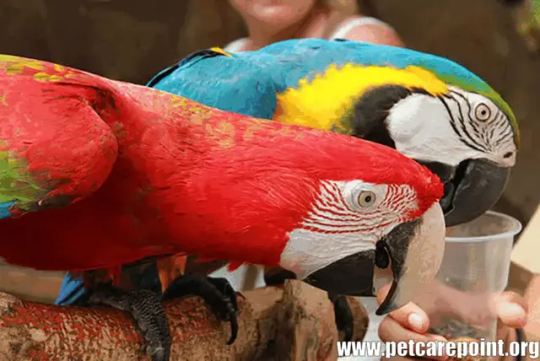
Parrots are known for their vibrant colors, intelligence, and social nature. Here’s a guide to some of the most colorful and popular parrot species:
Common Parrot Species
1. African Grey Parrot
Description: Medium-sized parrot with predominantly grey feathers and a bright red tail.
Color: Grey with a red tail.
Notable Traits: Highly intelligent and excellent at mimicking human speech.
2. Amazon Parrot
Description: Medium to large-sized parrots with predominantly green feathers and various colorful markings.
Color: Green with yellow, blue, and red markings.
Notable Traits: Known for their talking ability and playful nature.
3. Budgerigar (Budgie)
Description: Small, colorful parrot with a cheerful personality.
Color: Various colors including green, blue, yellow, and white.
Notable Traits: Popular pet birds due to their small size and vibrant colors.
You Can get more information about this article by visiting:
0 notes
Text
Understanding Parrots: Behavior, Habits, and Care
Parrots are among the most captivating and intelligent birds in the animal kingdom. Their vibrant plumage, remarkable vocal abilities, and playful personalities make them a favorite among pet enthusiasts and bird watchers alike. This article delves into the world of parrots, exploring their behavior, natural habitats, and the care they require both in the wild and as pets.
The Fascinating World of Parrots
Parrots belong to the family Psittacidae, which encompasses around 400 species of colorful, tropical birds. These species are spread across various continents, including South America, Africa, Australia, and parts of Asia. The diversity within this family is astonishing, with variations in size, color, and vocal capabilities.
Physical Characteristics
One of the most striking features of parrots is their vibrant plumage. Colors range from brilliant greens and blues to vibrant reds and yellows. This diversity in color helps parrots blend into their natural habitats or stand out, depending on their needs. Their zygodactyl feet, which have two toes pointing forward and two backward, are adapted for gripping branches and handling food. Additionally, parrots possess a strong, curved beak ideal for cracking nuts and seeds, as well as manipulating objects.
Behavior and Social Structure
Parrots are known for their intelligence and complex social behaviors. In the wild, they live in flocks that can range from small family units to large groups of hundreds. These flocks provide social interaction, protection from predators, and assistance in finding food.
Social bonds are crucial for parrots, and their communication skills are particularly impressive. Many species are capable of mimicking human speech and other sounds they frequently hear. This mimicry is a byproduct of their highly developed vocal apparatus and cognitive abilities. In the wild, parrots use vocalizations to communicate with flock members, warn of predators, and attract mates.
Habitat and Diet
Parrots inhabit diverse environments, including tropical rainforests, savannas, and even arid regions. Their diet primarily consists of seeds, nuts, fruits, and flowers, though some species also consume insects and small animals. Their feeding habits contribute to the health of their ecosystems, as they aid in seed dispersal and plant pollination.
Parrots as Pets
Keeping a parrot as a pet can be a rewarding experience, but it also comes with significant responsibilities. Parrots are long-lived animals, with many species living for 20 to 50 years, and some even surpassing this range in captivity. This longevity requires a long-term commitment from their owners.
Choosing the Right Parrot
When selecting a parrot as a pet, it’s crucial to consider the bird’s size, temperament, and care requirements. Smaller species like the Budgerigar (budgie) or Lovebird may be suitable for first-time bird owners, while larger species like the African Grey or Macaw require more space, time, and attention.
Caring for a Parrot
Diet: A balanced diet is essential for a parrot’s health. In captivity, parrots should be provided with a variety of fresh fruits, vegetables, and high-quality pellets. Avoid feeding them chocolate, caffeine, or avocado, as these can be toxic.
Social Interaction: Parrots are highly social and require regular interaction with their human companions. Daily playtime and mental stimulation are important to prevent boredom and behavioral issues. Toys, puzzles, and training sessions can help keep them engaged.
Housing: Parrots need a spacious cage that allows them to move around comfortably. The cage should be equipped with perches, toys, and access to fresh water. Regular cleaning is necessary to maintain a healthy environment.
Health Care: Routine veterinary check-ups are vital to ensure a parrot’s well-being. Look out for signs of illness such as changes in eating habits, feather plucking, or lethargy. Regular grooming and beak trimming may also be required.
Training: Training a parrot can enhance its quality of life and strengthen the bond between bird and owner. Positive reinforcement methods, such as treats and praise, can be used to teach various commands and tricks.
Conservation and Threats
Many parrot species are facing threats due to habitat loss, illegal trapping, and the pet trade. Conservation efforts are crucial to protecting these remarkable birds and ensuring their survival for future generations. Organizations worldwide are working to preserve parrot habitats, enforce wildlife protection laws, and educate the public about responsible pet ownership.
Conclusion
Parrots are extraordinary creatures that captivate with their beauty, intelligence, and social behaviors. Whether admired in their natural habitats or cared for as pets, these birds offer a glimpse into the wonders of avian life. Understanding their needs and respecting their natural behaviors are essential steps in ensuring their well-being and conserving their populations. By fostering a greater appreciation and commitment to their care, we can help secure a brighter future for parrots around the globe.
For more visit:
https://rasumusalli.blogspot.com/2024/07/understanding-raw-parrots-guide-to.html
1 note
·
View note
Text
bird breeders in US
If you're looking to find bird breeders in the United States, there are numerous reputable breeders that specialize in a wide range of bird species, from parrots to finches, canaries, and exotic species. Breeding birds is a skilled and responsible practice, and it's important to choose a breeder who prioritizes the health, well-being, and ethical treatment of their birds.
Here’s a guide to bird breeders in the U.S., categorized by species, along with ways to find breeders and tips for choosing a reputable one.
1. Parrot Breeders
Parrots are among the most popular pet birds in the U.S. They come in various species, including macaws, cockatoos, African greys, Amazon parrots, and conures.
Popular Parrot Species:
Macaws: Known for their large size and vibrant colors (e.g., Blue and Gold Macaw, Scarlet Macaw).
African Grey Parrots: Famous for their intelligence and ability to mimic human speech.
Amazon Parrots: Known for their playful personalities and bright green feathers.
Cockatoos: Recognized for their charming personalities and crest feathers.
Conures: Smaller parrots that are very social and colorful, such as Sun Conures and Green Cheek Conures.
Top Parrot Breeders:
The Parrot University (California): Specializes in breeding African Grey Parrots, Cockatoos, Macaws, and more.
Birds of Paradise (Florida): Focuses on a variety of exotic parrots, including Macaws and African Greys.
R & R Birds (Texas): Known for breeding a wide range of parrot species, including Amazons and Conures.
2. Canary Breeders
Canaries are small, songbirds that come in various color varieties, including yellow, red, and even orange.
Popular Canary Species:
American Singer Canary: Known for its beautiful song.
Red Factor Canary: A colorful variety known for its vibrant red feathers.
Gloster Canary: A unique variety with a round, puffy crest.
Top Canary Breeders:
Canary Connection (California): Specializes in breeding various canary species, particularly American Singers.
The Canary Shop (Michigan): Focuses on high-quality American Singer Canaries and other varieties.
3. Finch Breeders
Finches are small, colorful birds that make great pets for smaller living spaces. Popular species include zebra finches, society finches, and Gouldian finches.
Popular Finch Species:
Zebra Finch: A small, hardy finch with a beautiful song.
Gouldian Finch: Known for its bright, rainbow-colored feathers.
Society Finch: Known for being very social and easy to care for.
Top Finch Breeders:
Finches & Friends (California): Breeds a variety of finches, including zebra finches and society finches.
Gouldian Finch Aviary (Florida): Specializes in breeding Gouldian finches.
4. Exotic Bird Breeders
Exotic birds are often those that are not as commonly kept as pets, and they may include species like cockatiels, lovebirds, or even larger species like the eclectus parrot.
Popular Exotic Bird Species:
Cockatiels: Small, affectionate birds known for their crests and cute whistles.
Lovebirds: Small, colorful birds that are very social and affectionate.
Eclectus Parrots: Known for their striking sexual dimorphism (males are green, females are red and purple).
Top Exotic Bird Breeders:
Lovebird Aviary (California): Specializes in breeding a variety of lovebirds, including the Peach-Faced Lovebird.
Eclectus World (Texas): A breeder specializing in eclectus parrots.
5. Pigeon Breeders
Pigeons are a unique category of bird breeders, with some breeders focusing on racing pigeons, while others specialize in ornamental or pet pigeons.
Popular Pigeon Breeds:
Racing Homers: Pigeons bred for competitive racing and long-distance flying.
Fancy Pigeons: Decorative pigeons bred for show, including breeds like the Show Racer and the Jacobin.
Top Pigeon Breeders:
National Pigeon Association: Offers a breeder directory for racing pigeons and ornamental pigeon breeders.
Pigeon and Dove Farm (California): Specializes in ornamental and pet pigeon species.
How to Find Bird Breeders in the U.S.
National Bird Associations and Clubs:
American Federation of Aviculture (AFA): The AFA is a major organization that supports bird breeders, and its website provides breeder listings and resources.
National Finch & Softbill Society (NFSS): For finch lovers, this organization offers resources and breeder directories.
The Parrot Society USA: This society lists parrot breeders and provides resources for potential bird owners.
Online Marketplaces:
Websites like BirdBreeders.com, BirdsNow.com, or Petfinder offer databases of bird breeders and rescue organizations across the U.S. where you can search by bird species and location.
Local Pet Stores and Bird Shops:
Many pet stores partner with breeders and may have birds for sale or offer breeder referrals.
Specialized bird shops often have a network of trusted breeders and can provide valuable advice.
Expos and Bird Shows:
Bird expos and shows, such as the American Bird Expo or National Pet Bird Show, allow you to meet breeders directly and even purchase birds on-site.
Social Media Groups and Forums:
Facebook groups, Reddit forums, and other online bird communities often share breeder recommendations and allow members to connect with reputable breeders.
Tips for Choosing a Reputable Bird Breeder
Health Guarantees: A reputable breeder should be able to provide proof of the bird's health, including vaccination records, DNA testing, and health checks.
Ethical Practices: Choose breeders who prioritize animal welfare. Make sure that they breed birds responsibly and don’t contribute to overbreeding or unethical practices.
Visit the Breeder’s Facility: If possible, visit the breeder’s facility in person. This will allow you to check the conditions in which the birds are raised and ensure they are in clean, safe, and healthy environments.
Customer Reviews and References: Check online reviews or ask the breeder for references from previous customers. This will give you insight into their reputation and the quality of their birds.
Conclusion
Whether you’re looking for a playful parrot, a colorful finch, or a peaceful canary, there are many bird breeders in the U.S. that can provide healthy, well-cared-for birds. Be sure to research breeders thoroughly to find one that prioritizes the health and ethical treatment of their birds. With the right breeder, you can find a companion that will bring joy and companionship to your home for years to come.
0 notes
Text
if i may add onto this: all wild animals are dangerous to be around due to diseases. A deer can be just as dangerous as a pigeon if not more because of tics and other googlies they picked up in nature. Judging an animal on that alone is just... dumb. No animal is inherently dangerous to be around in terms of disease, like humans, it depends on what they were exposed to and their environment. You don't mess with wildlife because the animal itself is dangerous, but the fact you don't know where that animal has been in. this is not the animals fault. Second: as an owner of a rescue African grey parrot, i agree. Parrots should have never become pets. my poor bird came from an abusive household where he was beat and left in a cage for days on end. when i got him, his chest was blood red because the poor thing was feather plucking. he takes a lot of time and energy to take care of, and people do not realize that these birds are not like what you see on YouTube. they are loud and can be moody and once they learn a word/sound they will NEVER stop saying it. ever. They require constant mental stimulation and their diets are VERY DELICATE to the point that improperly feeding them could kill them easily. I have had him for nearly 17 years now, and he still struggles with mental health issues. If I had my way he would be in the wild, not living in my house, but sadly I can't EVER release him into the wild or he will die due to his circumstances. at least pigeons were domesticated, but parrots are literally wild animals we poached and bred for entertainment. Most parrots are abused because people treat parrots like they treat a pet goldfish you would win at a carnival (which is equally is bad imo) DO NOT BUY A BIRD FROM A PET STORE OR A BREEDER. Please just go to your local shelter and volunteer as an assist. I don't even recommend adopting because it takes a lot of commitment and patience to LIVE with them let alone take care of them. TLDR: disease comes from all wild animals not just rats and pigeons, and Parrots are one of the most abused creatures in the pet industry and you should never buy one.
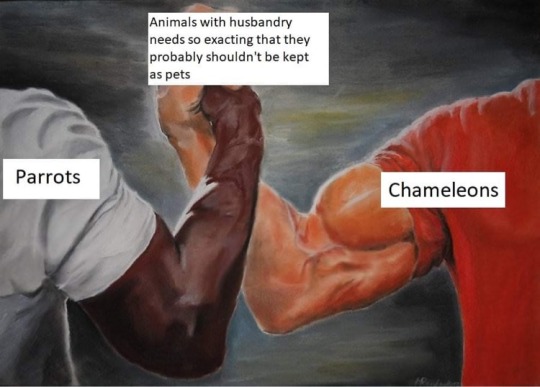
Don’t hate me but I really believe the world would be a better place if pigeons were the ubiquitous avian pet instead of parrots 👀
30K notes
·
View notes